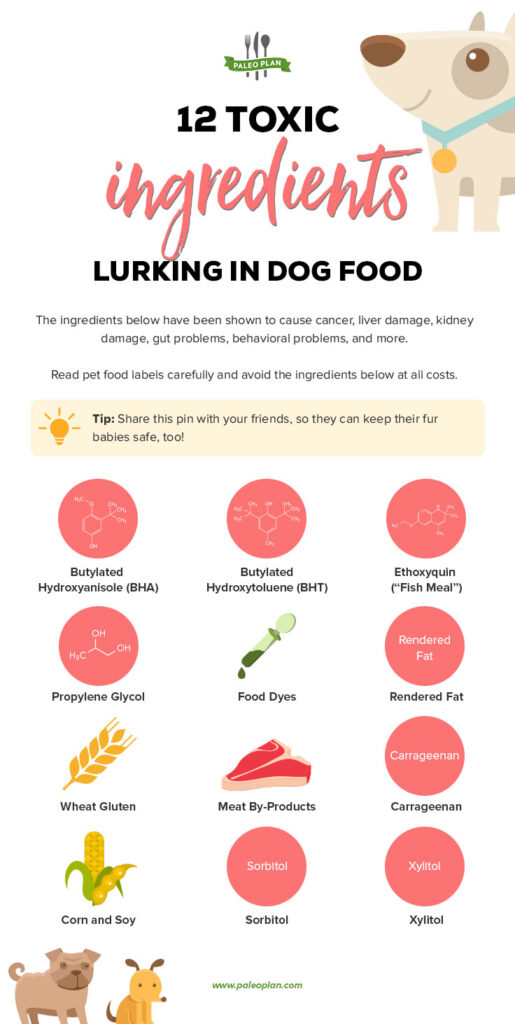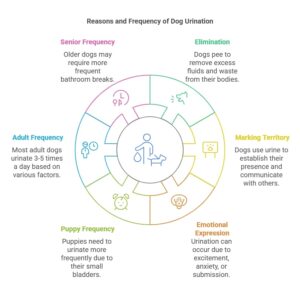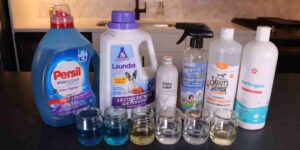Many pet owners want the best for their dogs. Nutrition plays a key role in a dog’s health.
Unfortunately, some dog foods contain harmful ingredients that can affect their well-being. Understanding what goes into your dog’s food is crucial. Many brands use fillers, artificial flavors, and preservatives that can be harmful over time. These ingredients may lead to health issues like allergies, obesity, or digestive problems.
With so many options on the market, it’s hard to know which foods are safe. This blog will explore common harmful ingredients in dog food. By learning about these risks, you can make better choices for your furry friend. Your dog's health depends on the food you provide, so let’s dive in and uncover the truth behind dog food ingredients.
The Hidden Perils In Your Dog's Bowl
Many dog owners trust commercial dog food. They believe it is safe and nutritious. However, some ingredients can harm your pet. Understanding these dangers helps you make better choices.
Identifying Risky Preservatives
Preservatives keep dog food fresh. Some are safe, but others can be harmful. Here are common risky preservatives:
| Preservative | Potential Risks |
|---|---|
| BHA (Butylated Hydroxyanisole) | Linked to cancer in lab animals. |
| BHT (Butylated Hydroxytoluene) | May cause liver damage. |
| Ethoxyquin | Used as a pesticide; may harm the liver. |
These preservatives may seem harmless. They can have serious side effects. Always check the ingredient label for these harmful additives.
The Truth About By-products And Fillers
By-products and fillers are common in dog food. They may save manufacturers money, but they can harm your dog. Here’s why:
- By-Products: These include animal parts not fit for human consumption.
- Fillers: Ingredients like corn and soy add little nutrition.
- Low Quality: Often made from diseased or dead animals.
Many dog foods list these ingredients. They may be cheap, but they lack essential nutrients. High-quality dog food should contain real meat and whole grains.
Check labels carefully. Choose brands that prioritize your dog's health. Your furry friend deserves the best.
Deciphering Dog Food Labels
Understanding dog food labels is vital for your pet's health. Labels show what your dog eats. Some ingredients are safe, while others can be harmful. Knowing how to read these labels helps you make better choices.
Key Ingredients To Avoid
Not all dog food is created equal. Some ingredients can harm your dog. Here are key ingredients to watch out for:
- Artificial Preservatives: BHA, BHT, and ethoxyquin are common. They can lead to health problems.
- Meat By-products: These are low-quality parts of animals. They often lack nutrients.
- Fillers: Corn, wheat, and soy are cheap fillers. They offer little nutritional value.
- Added Sugars: Some brands add sugar for taste. This can lead to obesity and diabetes.
- Color Additives: Artificial colors have no nutritional benefit. They can cause allergic reactions.
Understanding Ingredient Listings
Reading ingredient listings is essential. Ingredients are listed in order of weight. The first few ingredients matter most. Here’s how to interpret them:
- Protein Sources: Look for named meats like chicken or beef. Avoid vague terms like “meat meal.”
- Whole Ingredients: Choose foods with whole grains and vegetables. These are healthier.
- Avoid Non-specific Terms: Terms like “animal fat” or “meat by-products” can be misleading.
- Check for Quality: Research brands to see ingredient quality. Choose trusted brands with good reputations.
Use this knowledge to choose the best food for your dog. Good choices lead to a healthier, happier pet.
Chemical Additives And Their Impact
Chemical additives in dog food often raise concern. These substances can affect your dog's health. Understanding their impact is crucial for making informed choices. Some additives are harmless, while others can be harmful. Knowing the differences helps you protect your pet.
Artificial Colors And Flavors
Artificial colors and flavors make dog food look and taste better. Manufacturers use them to attract buyers. However, these additives have risks.
- Health risks: Some artificial colors may cause allergies.
- Behavior changes: Certain flavors might affect your dog's mood.
- Long-term effects: Regular intake can lead to chronic issues.
Dogs do not need these additives. Their natural diet is healthier. Always check labels for these ingredients.
Preservatives Linked To Health Issues
Preservatives are common in dog food. They extend shelf life but can be harmful. Some preservatives have been linked to serious health problems.
| Preservative | Potential Health Issues |
|---|---|
| BHA | Possible cancer risk |
| Ethoxyquin | Liver damage, reproductive issues |
| Propyl Gallate | Stomach irritation, cancer risk |
Always read ingredient lists. Avoid foods with harmful preservatives. Choose brands that use natural alternatives.
The Lowdown On Meat Sources
Understanding the meat sources in dog food is crucial. Many brands claim to use high-quality meat. However, not all meat is the same. Some meat sources can be harmful. It's essential to know what you are feeding your dog.
The Reality Of Meat Meals
Meat meals are common in dog food. They sound nutritious but can be misleading.
- Meat meal is a rendered product. It includes animal parts not fit for human consumption.
- Common meat meals may come from unnamed sources. This raises concerns about quality.
- Some brands use by-products, which may include unhealthy ingredients.
Check the label. Look for specific meat sources like chicken meal or beef meal. Vague terms like “meat meal” should raise red flags.
Red Flags In Protein Sources
Not all protein sources are safe. Watch for these warning signs:
- Unnamed meats: Terms like “meat” or “animal” are too vague.
- By-products: These can include lower quality parts.
- High grain content: Dogs need protein, not fillers.
- Artificial additives: These can harm your dog's health.
Always choose dog food with clear, named protein sources. This ensures your dog gets quality nutrition. Read labels carefully. Protect your furry friend from harmful ingredients.
Grains And Gluten: Necessary Or Nuisance?
The debate about grains and gluten in dog food is ongoing. Some people believe grains are necessary. Others think they are a nuisance. Understanding this topic helps you make better choices for your dog.
The Controversy Over Corn And Wheat
Corn and wheat are common ingredients in many dog foods. They provide energy and some nutrients. But not everyone agrees on their benefits.
- Pros of Corn and Wheat:
- Cost-effective sources of carbohydrates.
- High in energy.
- Contains some protein and fiber.
- Cons of Corn and Wheat:
- Common allergens for some dogs.
- May cause digestive issues.
- Not as nutritious as other options.
Some experts argue that grains have no place in dog food. They suggest that dogs thrive on a meat-based diet. Others believe grains can be part of a balanced diet.
Gluten Sensitivity In Dogs
Gluten comes from wheat, barley, and rye. Some dogs may have gluten sensitivity. This condition can cause various health issues.
| Symptoms of Gluten Sensitivity | Possible Reactions |
|---|---|
| Vomiting | Digestive upset |
| Diarrhea | Dehydration |
| Itchy skin | Allergic reactions |
| Weight loss | Nutritional deficiencies |
Diagnosing gluten sensitivity can be difficult. A vet can help determine if your dog has this issue. If gluten is a problem, look for grain-free options.
Understanding grains and gluten in dog food is crucial. Each dog is unique. Their dietary needs may differ. Always consult your vet for the best advice.

Credit: www.bigbusinessscoopers.com
The Sugar Rush: Sweeteners In Dog Food
Sweeteners in dog food can be surprising. Many brands add sugars for flavor. Dogs love sweet tastes, just like humans. However, these sugars may harm their health.
Hidden Sugars To Watch Out For
Many dog foods contain hidden sugars. These can come under different names. Here are some common sweeteners to avoid:
- High fructose corn syrup
- Sucrose
- Glucose
- Fructose
- Molasses
Check the ingredient list carefully. Some brands may not show sugar clearly. Look for phrases like “natural flavor” or “sweetener” too.
The Effects Of Sugars On Canine Health
Excessive sugar can cause many problems. Here are some potential effects:
| Health Issue | Description |
|---|---|
| Obesity | Extra calories lead to weight gain. |
| Diabetes | Sugar spikes can lead to insulin resistance. |
| Dental Issues | Sugars can cause tooth decay. |
| Hyperactivity | High sugar can lead to energy bursts. |
Monitor your dog's diet closely. Choose foods without added sugars. A healthy diet supports their overall well-being.
Navigating The World Of Fats And Oils
Choosing the right fats and oils for your dog's food is crucial. Not all fats are equal. Some provide health benefits, while others can harm your pet. Understanding these differences helps you make better choices for your dog’s diet.
Healthy Fats Vs. Harmful Fats
Healthy fats are essential for your dog's health. They provide energy and support cell function. Harmful fats can lead to obesity and other health issues.
Here are some key points about healthy and harmful fats:
| Type of Fat | Source | Health Impact |
|---|---|---|
| Healthy Fats |
| Supports skin, coat, and joint health |
| Harmful Fats |
| Leads to obesity, diabetes, and heart problems |
Understanding Omega Fatty Acids
Omega fatty acids are crucial for your dog’s well-being. They come in two main types: Omega-3 and Omega-6. Both play vital roles in a dog’s health.
- Omega-3: Found in fish oil, chia seeds, and flaxseed. They help reduce inflammation and support brain health.
- Omega-6: Found in vegetable oils and meats. They support skin health and boost the immune system.
Balance is key. Dogs need both Omega-3 and Omega-6 for optimal health. Too much of one type can lead to health issues. Always check the dog food label for these important fats.

Credit: www.hibachininja.com
How To Choose A Safer Dog Food
Choosing a safer dog food is essential for your pet's health. Many dog foods contain harmful ingredients. Understanding what to look for helps you make better choices. Here are some tips and recommendations.
Tips For Reading Dog Food Reviews
Reading dog food reviews can guide your choices. Follow these tips:
- Check Ingredients: Look for real meat as the first ingredient.
- Avoid Fillers: Stay away from foods with corn, wheat, or soy.
- Read Labels: Look for natural preservatives like tocopherols.
- Look for Certifications: Choose brands with AAFCO or similar certifications.
- Research Brands: Look for company transparency and recall history.
Recommendations For Wholesome Brands
Here are some dog food brands that focus on quality:
| Brand | Features |
|---|---|
| Blue Buffalo | Natural ingredients, no artificial additives. |
| Wellness Core | High protein, grain-free options. |
| Canidae | Simple recipes, limited ingredients. |
| Orijen | Fresh ingredients, biologically appropriate. |
| Nature's Logic | Whole food ingredients, no synthetic vitamins. |
Choosing the right dog food can make a big difference. Focus on quality ingredients and reputable brands. Your dog deserves the best.
The Role Of Homemade And Raw Diets
Feeding your dog a homemade or raw diet can be beneficial. It gives you full control over ingredients. This helps avoid harmful additives in commercial dog food. Many dog owners choose this path for better health.
Preparing Balanced Meals At Home
Making balanced meals for your dog is important. Here are some key points to consider:
- Include protein sources like chicken, beef, or fish.
- Add vegetables such as carrots, peas, and spinach.
- Incorporate healthy fats from sources like fish oil or flaxseed.
- Include carbohydrates like brown rice or sweet potatoes.
- Consult a vet to ensure the diet is balanced.
It’s crucial to avoid harmful ingredients. Always check for safe foods. Avoid onions, garlic, chocolate, and grapes. These can be toxic to dogs.
Pros And Cons Of Raw Feeding
Raw feeding has both advantages and disadvantages. Here’s a breakdown:
| Pros | Cons |
|---|---|
| Improved coat and skin health | Risk of bacterial infections |
| Better digestion | Unbalanced nutrition if not done right |
| Higher energy levels | More time-consuming to prepare |
| Less processed food | Potential for dental issues with bones |
Raw diets often include meat, bones, and organs. They can be beneficial for some dogs. Always consult a vet before starting a raw diet. This ensures it meets your dog's specific needs.
Advocating For Stronger Regulations
Advocating for stronger regulations in dog food is essential. Many dogs suffer from harmful ingredients in their diets. Pet owners deserve to know what goes into their dog's food. Better regulations can ensure safer products for our pets.
Current Standards And Loopholes
The current standards for dog food are not strict enough. Some loopholes allow harmful ingredients to slip through. Here are some key points:
- Low-quality ingredients: Some brands use fillers and by-products.
- Vague labeling: Terms like “natural” can be misleading.
- Limited testing: Not all products undergo thorough safety checks.
These issues put pets at risk. Regulatory bodies need to close these gaps. Stricter guidelines will promote transparency in pet food production.
How Pet Owners Can Drive Change
Pet owners play a crucial role in advocating for better regulations. Their voices can lead to real change. Here are some ways to get involved:
- Research dog food brands thoroughly.
- Join local pet advocacy groups.
- Contact lawmakers about pet food safety.
- Share information on social media.
- Support companies with high safety standards.
These actions can create a safer environment for pets. The more people speak out, the more likely change will happen.

Credit: shop.bullymax.com
Frequently Asked Questions
What Are Common Harmful Ingredients In Dog Food?
Common harmful ingredients in dog food include artificial preservatives, colors, and flavors. Additionally, by-products and low-quality fillers can cause health issues. Look for ingredients like corn, wheat, and soy, which may be hard for dogs to digest. Always check labels for better nutrition.
How Can I Identify Harmful Dog Food Ingredients?
To identify harmful dog food ingredients, read the label carefully. Look for terms like “by-products,” “artificial additives,” or “fillers. ” Research any unfamiliar ingredients to understand their effects. Quality dog food should have whole, recognizable ingredients that promote your dog's health.
Are Grain-free Diets Harmful For Dogs?
Grain-free diets can be harmful for some dogs, particularly those prone to certain health issues. While many dogs thrive on grain-free options, others may develop heart problems. Always consult your veterinarian before making significant dietary changes to ensure your dog’s health and well-being.
What Should I Avoid In Dog Food?
Avoid dog food containing artificial preservatives, fillers, and by-products. Ingredients like corn, soy, and wheat can lead to allergies or digestive issues. It's best to skip foods with vague terms like “meat meal” and opt for high-quality, whole food ingredients instead.
Conclusion
Choosing the right dog food is crucial for your pet’s health. Avoid harmful ingredients by reading labels carefully. Look for whole foods and natural ingredients. Knowledge is power when it comes to feeding your dog. Prioritize their well-being and make informed choices.
Your dog deserves the best nutrition possible. By staying aware, you can protect your furry friend from harmful additives. Keep their health and happiness in mind. A little research goes a long way for your dog’s diet.














